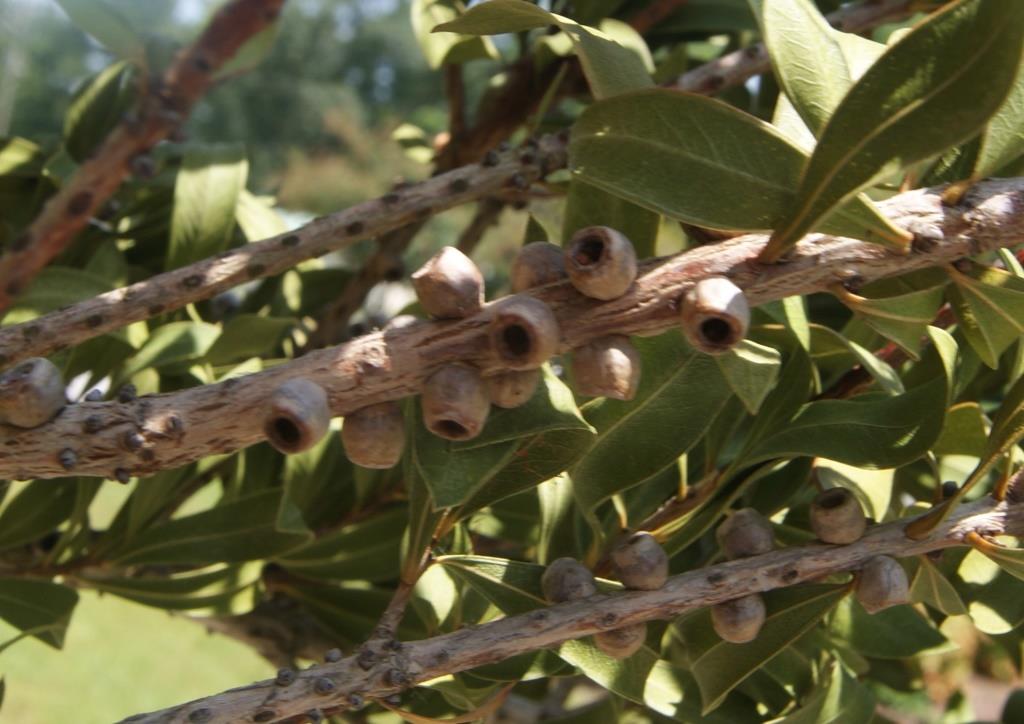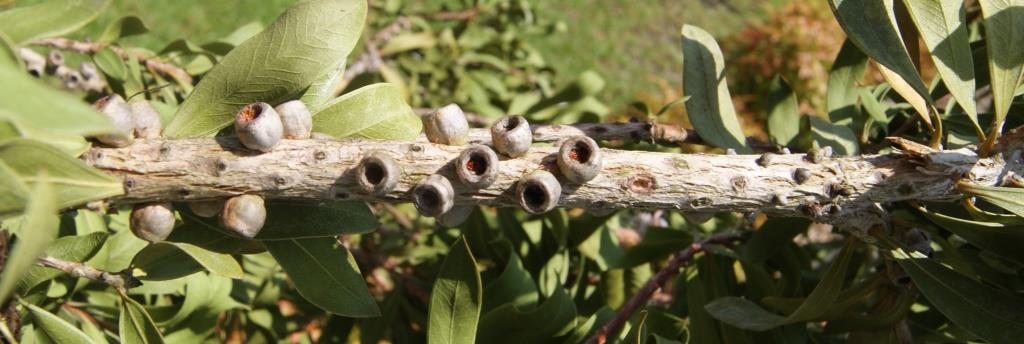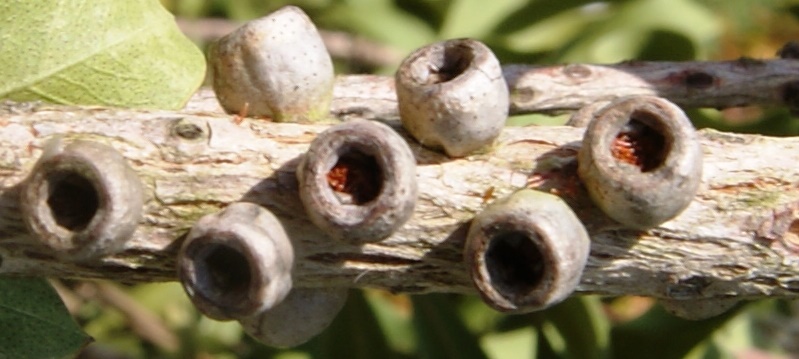by Beth Bolles | Aug 5, 2013
Thinking of bulbs for the garden? Summer is not necessarily the time of year that gardeners think about beautiful blooms from bulbs and bulb-like plants, but there are many that bloom in the summer garden.
In general, many types of plants with an underground storage organ are classified as a bulb. These include plants with tubers, rhizomes, or corms. True bulbs including Lycoris and Crinum lily are compressed stems with a growing point surrounded by thick, fleshy scales. Corms such as Crocosmia are solid masses of stem tissue with a terminal bud and side nodes. The rhizome is an underground stem that grows laterally, with representatives of this type being blackberry lily and ginger.
It is likely that your garden is full of bulb-like plants and you were just not aware of their underground beginnings. If you want to consider a few more for the summer garden, here are some good choices.
Blackberry lily is a member of the Iris family that offers good summer bloom in our northern Florida gardens. Plants form sprays of foliage about 2 feet in height with stalks of orange flowers with red spots. Plant in full sun or partial shade and supply with well drained, amended soil.
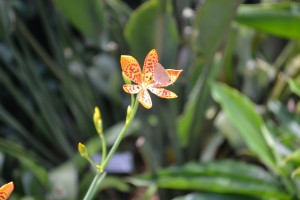
A hairstreak butterfly visits the Blackberry lily flower.
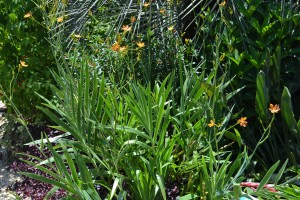
Another bright summertime bloomer is Croscomia. Commonly overlooked early in the year as foliage regrows from the cold, the bright orange flowers that emerge in summer make it a feature in garden beds. Plants grow well in both full sun and partial shade but clumps can expand easily beyond the desirable planting area. Thin out every few seasons to keep the clump manageable.
A tuberous perennial that will have stunning flowers closer to eye level is the Gloriosa or flame lily. Plant stems will wind around a trellis or garden feature, hold on with tendrils, and support large upward-curved petals. Flower colors are red, yellow, orange, or mixes of several colors. Flame lily prefers sunny locations and lots of moisture in the growing season. Winter soils should be drier to prevent tubers from rotting.
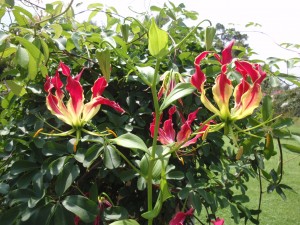
Flame lily growing with a spring blooming vine.
All of these options can enhance your garden and extend your bulb growing season beyond the spring. Happy Gardening!
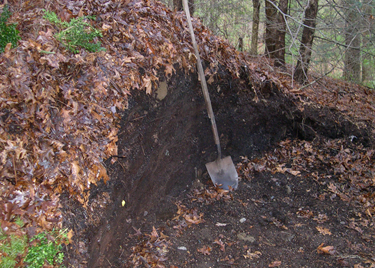
by | Aug 5, 2013
With all of the rainy weather Northwest Florida has been having this summer, plenty of excess yard debris is littering our yards. Don’t put it in the landfill, Compost It !
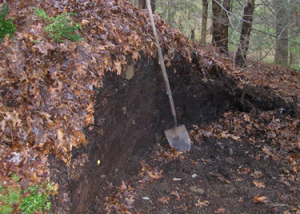
Compost Pile
Compost is used primarily in bed preparation to improve the soil and can even be used in preparing potting mixes. Partially composted material also can be used as mulch. And since homemade compost is free, it helps reduce the cost of gardening – which means more money left over to buy plants.
Returning these organic materials to the garden maintains natural biological cycles and is an ecologically sensible means of recycling organic waste. It is never very efficient nor environmentally friendly to pile up leaves and grass clippings in bags on the curb to be hauled away to rapidly filling landfills and then go out and buy peat moss that has been dug up and shipped in from Canada.
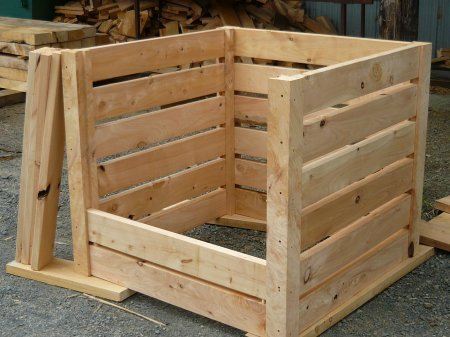
Build Your Own!
Compost piles should be located in a convenient, but out-of-the-way, location. A source of water nearby is helpful. Avoid locating the pile against fences or other structures made out of wood, because the constant moisture can cause decay. Make the pile about 3 feet wide by 3 feet deep by 3 feet wide to 5 by 5 by 5 in size. Anything smaller will not decompose as well, and larger piles are more difficult to work.
Although compost can be made just by stacking organic matter in a pile, most gardeners prefer to enclose the pile in a bin. There are a number of commercial bins on the market, or you can make your own very easily. A 15-foot-long piece of wire fencing material bent into a circle and fastened with a few pieces of wire is inexpensive, easy to build and works well. Avoid using untreated wood to build the bin, because that could lead to termite problems.
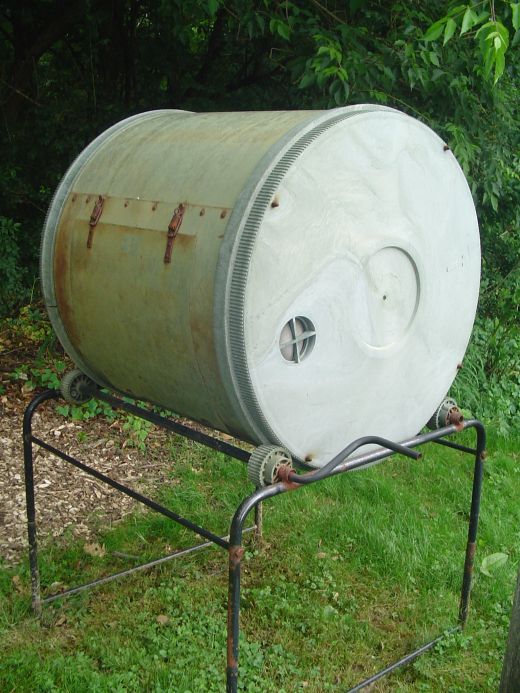
Commercial Bins Are Available
Compost can be created simply by piling up organic matter and allowing natural decomposition to take place (this is sometimes called passive composting). There is nothing really complicated about it, although using this method requires patience. Depending on circumstances, it may take six to 12 months for the organic matter to fully compost.
Typically, composting uses various techniques to speed up the natural breakdown of yard waste. It’s important to remember that raw organic material is converted into compost by the action of fungi and bacteria. In active composting, processes are set in place to make these organisms work faster and more efficiently.
These fungi and bacteria require adequate nitrogen, oxygen and moisture to decompose organic matter rapidly. The composting process attempts to provide these requirements, and the better those essentials are supplied, the faster the process will occur. Shredding or finely chopping materials also greatly speeds up the process.
As the microbes decompose the organic materials, temperatures within the pile may approach 160 degrees at the center. When properly done, this process produces a rich, earthy smell, not the bad odors many gardeners fear will occur. In addition, properly maintained compost piles will not attract and harbor vermin such as rats.
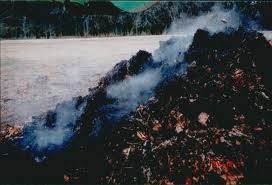
During Decomposition Compost Piles Get Very Warm
Try to include a variety of materials to encourage rapid decomposition. The more types of acceptable materials that are added the better the composting process.
Brown materials, such as brown leaves or chipped branches and stumps, are relatively low in nitrogen. Adding a commercial fertilizer or an organic fertilizer (such as blood meal) that contains nitrogen encourages rapid, thorough decomposition when these types of materials provide the bulk of what is being composted. A light sprinkling is applied over each 8- to 12-inch layer of organic matter as the pile is built.
If the pile is mostly green matter, turn it weekly to keep it loose and oxygenated.
Organic materials that can be used for composting include fallen leaves, grass clippings, shredded hedge clippings, raw vegetable and fruit trimmings, coffee grounds, dead houseplants and old flower arrangements. Manures, such as cow, horse, rabbit or poultry manures, make excellent additions to the compost and are relatively rich in nitrogen.
On the other hand, never put cooked foods, grease, meat, seafood scraps, fat or dog or cat droppings in the pile.
Oxygen is provided by enclosing the pile in a bin that has sides with a lot of ventilation openings, which allow air to move in and out. Turning the pile occasionally is labor intensive, but it ensures the pile is well aerated.
During dry weather it may be necessary to water the pile to maintain adequate moisture levels. Dry organic matter will not decompose. The pile should stay moist, but not constantly soggy. A pile that stays too wet does not contain enough oxygen and may produce sour odors. If this happens, turning the pile will correct the problem.
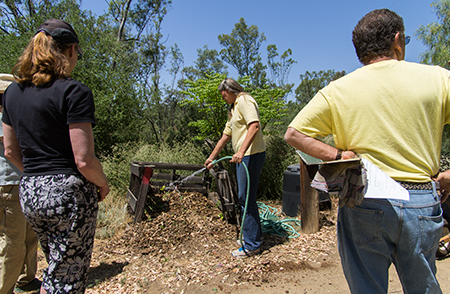
Water May Need to be Added During Dry Periods
As materials compost they lose more than half of their volume. When compost is ready for use, it should be dark brown and crumbly with much, or all, of the identity of the original material lost.
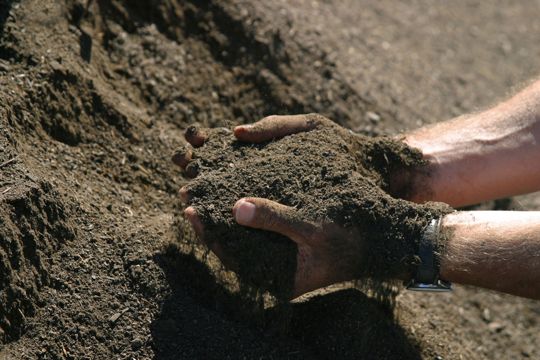
The Finished Product
The time it takes to finish varies depending on the materials used, how finely they were chopped and how well the appropriate moisture and oxygen levels were maintained. Two to six months is typical, but it can occur much faster. For more information, check out this great UF / IFAS publication on composting.
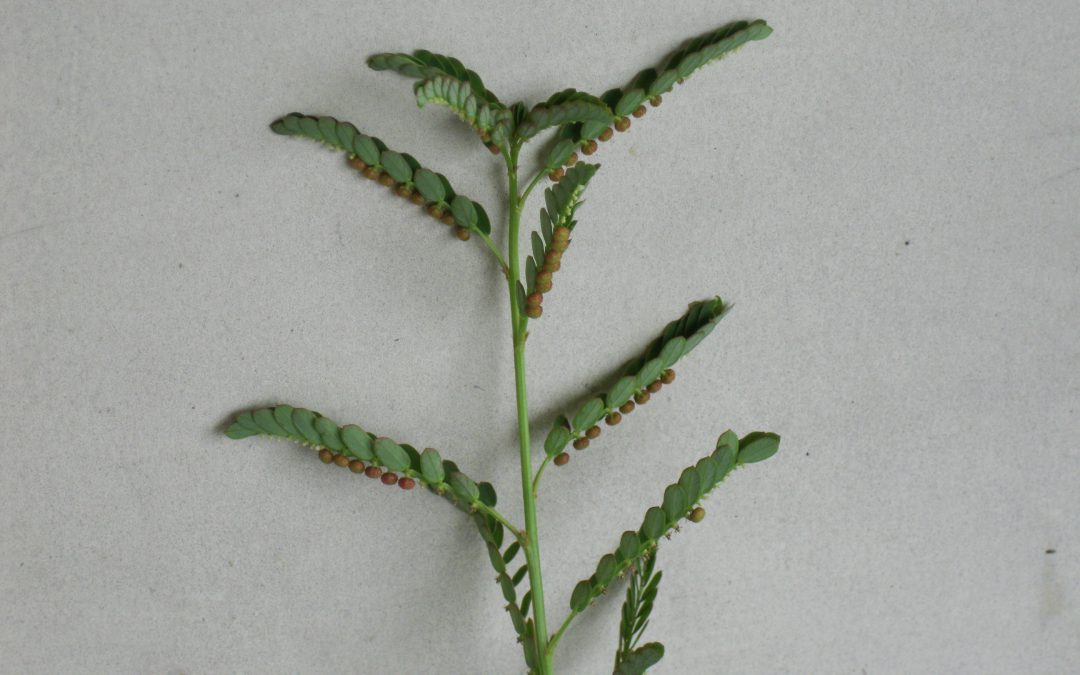
by Julie McConnell | Aug 5, 2013
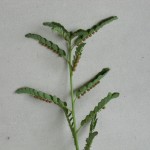
Chamberbitter
Above average rainfall this summer has supplied water to more than just our landscapes, weeds are benefiting and flourishing as well.
Just as with any other landscape pest, proper weed control starts with accurate identification and knowledge about the life cycle of the weed.
When weeds are low in number, mechanical control (pulling, mowing) is a good start. If weed population continues to increase and herbicide options are considered, several questions need to be answered before product application.
Questions you need to ask yourself about your weed and site:
- What weed(s) are you trying to control?
o Be sure you know what the name of the weed is so that you can find it on your product label “weeds controlled” list; if you need help with identification contact your local county extension office
- What is your site?
o Lawn – specific turfgrass is important, what is safe to use on one type may kill another
o Ornamental beds – again note specific plants near your treatment area in case of sensitivity
o Water bodies – some herbicides are not labeled for use within a given distance of water; if the weed is in or around the water only use herbicides listed for aquatic weed control
- What is the life cycle of your weed?
o Annual – one season life cycle, summer annuals complete their life cycle between spring and fall; winter annuals are active between fall and spring
o Biennial – two growing season life cycle
o Perennial – plant lives for three or more years
- What category does your weed fall into?
o Grasses – one seed leaf as it emerges from the soil; hollow, rounded, stems with nodes, parallel veins in true leaves; examples are crabgrass, dallisgrass, cogongrass, torpedograss
o Broadleaves – have two seed leaves and true leaves have net-like veins and usually have showy flowers; examples are lespedeza, dollarweed, clover, chickweed, henbit, florida betony
o Sedges/Rushes – sedges have solid triangular stems; rushes have round stems; both like moist or wet habitat; examples are purple nutsedge, yellow nutsedge, beak rush
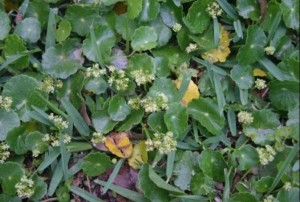
Dollarweed: Image Credit Edis ENH1128
Basic information about herbicide categories:
For more information read EDIS Publication “Weed Management in Home Lawns”
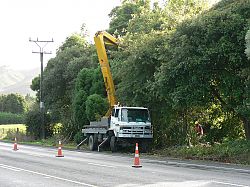
by Sheila Dunning | Jul 29, 2013
 With hurricane season upon us, evidence of preparation is all around us.
With hurricane season upon us, evidence of preparation is all around us.
Tree trimmers, contracted by the local electrical utility companies, have been removing trees, branches and other vegetation that is “too close” to power lines. Many homeowners are concerned over the practice.
In order to prevent power outages, the federally approved Vegetation Management Reliability Standard, FAC-033-2, requires utilities to manage vegetation growth along the path of power lines to prevent contact. A minimum clearance of fourteen (14) feet between trees and transmission lines in the right-of-way must be maintained at all times in order to achieve service reliability and public safety.
By Florida Statute 163, an electric utility is granted easement or right-of-way on private property in order to build and maintain electric power lines. Vegetation maintenance allows for the mowing of vegetation within the right-of-way, removal of trees or brush within the right-of-way and selective removal of tree branches that extend within the right-of-way by the electric utility personnel, licensed contractors or International Society of Arboriculture (ISA) Certified Arborists. The choice of how to trim trees and manage vegetation growth near a power line (e.g. pruning, herbicides, or tree removal) is primarily made by the electric utility, subject to state and local requirements and laws, applicable safety codes, and any limitations or obligations specified in right-of-way agreements. An individual may contact the utility company to obtain a copy of the right-of-way agreement for their property.
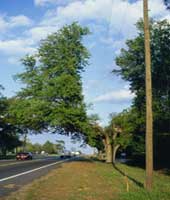 Sometimes, it appears to some that excessive vegetation has been removed. But, remember the utility companies are required to maintain the appropriate clearance “at all times.” For example, in the summer, power lines sag as they expand from rising air temperatures and heavy use. Also, wind and future growth must be taken into account when determining where to prune. Electric utilities usually prune or remove vegetation to a distance greater than the minimum clearances to account for all these factors.
Sometimes, it appears to some that excessive vegetation has been removed. But, remember the utility companies are required to maintain the appropriate clearance “at all times.” For example, in the summer, power lines sag as they expand from rising air temperatures and heavy use. Also, wind and future growth must be taken into account when determining where to prune. Electric utilities usually prune or remove vegetation to a distance greater than the minimum clearances to account for all these factors.
Tree trimming around power lines may seem like a local issue, but vegetation growth also affects interstate transmission lines. The U.S. Department of Energy estimates that electric utility service interruptions cost businesses and communities tens of billions of dollars annually. Tree contact with transmission lines was the leading cause of the August 2003 blackout that affected 50 million people in the Northeastern United States and Canada. In fact, that particular blackout prompted Congress to pass the Energy Policy Act of 2005, which lead the Federal Energy Regulatory Commission (FERC) to establish the Vegetation Management Reliability Standard.
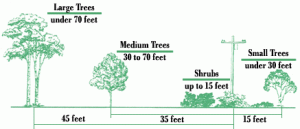 Should we have a storm that impacts Northwest Florida, remember that the clearing of trees and branches provides faster access for first responders, line repair crews, and other emergency service personnel. So, as you watch the preparation work being done, think about where you will be planting a tree so that it can reach full maturity without threatening power lines, therefore, not requiring “ugly pruning!”
Should we have a storm that impacts Northwest Florida, remember that the clearing of trees and branches provides faster access for first responders, line repair crews, and other emergency service personnel. So, as you watch the preparation work being done, think about where you will be planting a tree so that it can reach full maturity without threatening power lines, therefore, not requiring “ugly pruning!”














